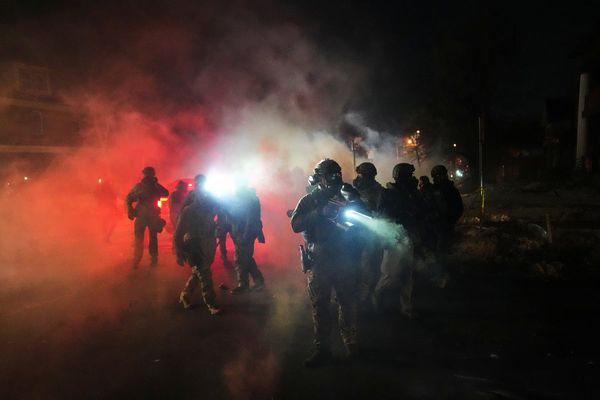
Fran Lebowitz is on stage in the courtyard of New York’s Noguchi Museum, presenting the 2023 Loewe Foundation Craft Prize to Japanese ceramicist Eriko Inazaki. She’s just viewed the exhibition of work by the 30 finalists in the late sculptor Isamu Noguchi’s personal studio over the road. “In my opinion,” the writer tells the 500-strong crowd, “what makes something craft instead of art comes down to whether something is useful or useless. Most of those things look pretty useless to me, which makes them art.”
Inazaki cries as she accepts the prize, saying it feels like a dream she never expected to come true. Her artwork is called Metanoia, a ridiculously detailed object that looks like intricate coral or a grain of pollen under a microscope. The judges say they’ve never seen anything like it. The exhibition for the prize is the first to be displayed in Noguchi’s studio, a mark of the respect with which the Loewe prize is regarded in the art world.

The €50,000 (£43,500) prize was inaugurated in 2016 by Jonathan Anderson, creative director of the Spanish fashion house Loewe. While its aim – to champion expertise in the likes of basketry, metalwork, bookbinding and other crafts – might seem rather esoteric, but it turned out to be prescient.
Since the prize was launched, Britain in particular has got hooked on craft. Textile and printmaker Anni Albers, ceramicist Lucie Rie and Faith Ringgold, an artist best known for her quilt making, have all had major British shows. Fashioning Masculinities: The Art of Menswear at the V&A was the UK’s most successful paid-for exhibition in 2022 according to the Art Newspaper. Strange Clay at the Hayward Gallery was the first major British art show to celebrate creatives working with clay.
Craft has also become appointment viewing with TV shows such as The Great Pottery Throw Down The Great British Sewing Bee and The Repair Shop regularly pulling in 6 million viewers. More Britons are becoming professional makers too as lockdown knitters and potters stay loyal to their new crafts. Retailer Hobbycraft saw sales jump 14.8% in 2022 to £203m. A Crafts Council survey found that, in 2020, sales of UK craft products topped £3bn, with the biggest demographic of buyers now aged 35 and under, showing a generational shift to a younger, more ethnically diverse crowd investing in craft.
Anderson’s award was partly inspired by his fashion hero, Japanese designer Issey Miyake, who promoted the work of pioneering potters like Lucie Rie and Jennifer Lee on his avant garde fashion platform. Anderson couldn’t understand why most fashion labels align themselves with artists rather than championing the craft that lies at the core of much of their work. Fashion would be nothing without goldsmiths, leather workers and textiles, after all. Loewe was founded in 1846 by leather craftsmen so it seemed like a good fit.
“Craft has existed since the beginning of time; you could tell the history of civilisation through ceramics if you wanted to. There have always been vessels,” Anderson says. “Porcelain changed the world – it helped cleanliness; medical devices were made from it. We as humans make things: it’s not a second job, it’s an impulse.”

Working on the craft prize has shown Anderson how disparate the view of making and creating is in different cultures and he’s involved in a project to protect endangered crafts in the UK. “There are only two people left in Scotland who can make sporrans. That, to me, is as scary as a language disappearing. Through doing the craft prize and working with governments and councils, you find out which countries have focus on this and have invested. If we don’t heroize these people, there won’t be another generation to do it.
“We’re in a year of debate about AI and we’re starting to realise that we want repetition of the same thing, reconfigured from what already exists. So if you think about that algorithm, and only using what is already there, you see we have to protect craft. You have to experiment with what exists to be able to progress.”
Anderson grew up in Northern Ireland. He’s currently most famous for dressing Rihanna for her Super Bowl performance and pregnancy reveal, but his designs for his own brand and Loewe are revered in fashion circles. JW Anderson, his label, is the only one to ever win menswear and womenswear designer of the year at the British Fashion Awards. It was also one of the first to adopt the idea of non-binary clothing. His more recent JW Anderson collection, in February, was all about protest and punk. He used his post-show interviews to call on British fashion to “step up and say something”.

“In Britain there’s a history of thinking craft is about nostalgic rustics and an escape from the world,” says Deyan Sudjic, former director of the UK’s Design Museum and a member of the Loewe prize jury. “The idea of the sacredness of handcraft began with William Morris and we still have a suspicion that it is a retreat from the world. I think taking part in this project has shown me a more subtle and nuanced view of what craft is about.”
Education is next on Anderson’s craft agenda, especially to encourage more work from underrepresented areas. “We want to go farther afield to countries that have no craft councils or no government funding – Africa, India, Latin America.”
There was only one finalist from Africa this year, the Benin artist Dominique Zinkpè, whose wooden hand-carved work The Watchers received a special mention. During the press view he said he was honoured to be able to represent Africa at the award. There were five finalists from Korea and six from Japan. The Loewe craft prize received more than 2,000 entrants this year and Anderson hopes that each year it will get bigger, and that craft, rather than dying out, will flourish.
“People are always predicting death,” said Lebowitz during her presentation speech at the Noguchi Musuem. “The death of the novel, the death of painting, the death of craft. It’s not true, but the people who said those things – they’re all dead.”







